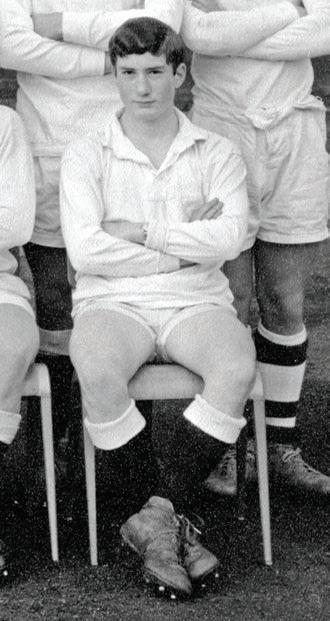Briefings Pauline Trainspotting From London Review of Books Vol. 43 No. 1 · 7 January 2021 The Railway Hobby by Ian Jack
On a wet and windy Saturday in October 2020 a few regulars of the Ian Allan (1935-39) Book and Model Shop gathered inside the premises for the last time. The shop – on Lower Marsh, behind Waterloo Station – would soon be a memory, like many things to do with the railway hobby. Stocked with books as well as models, Lower Marsh offered both forms of railway worship – textual and idolatrous – and in the most fitting location, within the squeal and scrape of the trains arriving and departing at Waterloo. It was at that station in 1942 that Ian Allan, then a young clerk in the offices of the Southern Railway, invented – or, more accurately, enabled – the hobby that became known as trainspotting. It made him a fortune, and popularised an affectionate interest in railways matched by no other country. Allan was sent to St Paul’s in London, where as a 15-year-old recruit to the Officers’ Training Corps he lost a leg in a camping accident. His subsequent failure to pass the School Certificate exams ended his hopes of taking up a traffic apprenticeship with the Southern Railway, the first step on the road to higher management, so he became a clerk in the publicity department instead. By 1955, the Ian Allan Locospotters’ Club had 230,000 members, and Allan was publishing lists of almost every mechanical moving object (I’m not sure about tractors) that could be seen on land, sea and air, devoting ABC booklets to British Liners, British Tugs, British Warships, British Airliners, British Buses and Trolleybuses, sometimes narrowing the field to sub-groups such as London Transport, Clyde Pleasure Steamers and the Battleships of World War One. There were specialist magazines – Trains Illustrated was one – as well as more ambitious books that had narratives rather than lists. Ian Allan died in 2015, a day before his 93rd birthday. 08
ATRIUM
SPRING / SUMMER 2021
Allan was sent to St Paul’s in London, where as a 15-year-old recruit to the Officers’ Training Corps he lost a leg in a camping accident.
Pauline Pair
Peter Judge (1930-33) was one of the best bowlers to have played for St Paul’s taking 84 wickets in the 1933 season. He also headed the school batting averages that year. He was good enough to play for Middlesex and Glamorgan over 14 years but he was no batsman, at least at first class level. He holds the record for the fastest pair (two noughts – a pair of spectacles) in cricket history. Coming in at a Number 11 against the touring Indians at Cardiff Arms Park in 1946 he was out first ball to complete Glamorgan’s first innings. The Indians enforced the follow on and, with little time remaining in the game, Judge stayed in the middle to open with his captain Johnny Clay. The usual ten-minute break between innings was even ignored and then Judge was instantly out first ball again.




